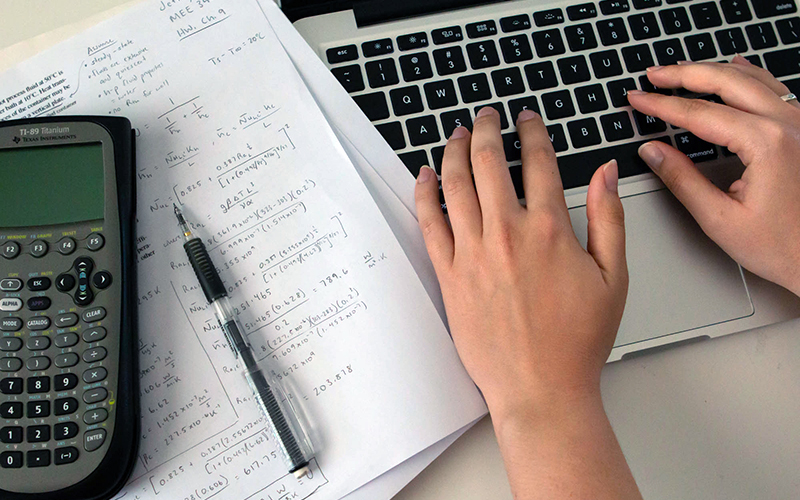PHOENIX – The Buckeye Union High School District has turned some of its buses into mobile Wi-Fi hotspots. Cox Communications has a program for low-income students to access free internet. And the state is seeking private donations to provide mobile hotspots for more students.
All are seeking solutions to a problem many Arizona students face: lack of access to reliable internet.
As of 2018, only about 82% of Arizona households had broadband internet, which is high-speed internet that’s always available, according to the U.S. Census Bureau.
After the governor issued statewide school closures last month, educational leaders scrambled to make sure students could continue to learn during the coronavirus pandemic. Some schools relied on technology their students already had, and others found ways to provide devices – laptops, iPads, Chromebooks – to help keep students learning.
But that technology also creates another hurdle for students who can’t connect.
The Tempe Elementary School District is a one-to-one technology district, meaning every student has access to an internet-connected device, and the school supplies laptops to students who don’t have a computer at home. However, not all students have reliable internet off school grounds, spurring the district to find workarounds.
“That’s definitely one of our challenges. … We’ve also provided lots of paper-and-pencil activities,” said Gabrielle Dunton, the district’s strategic communication coordinator. “I know some of our schools are even creating packets for families that might not have access to the internet, but they could come and pick up packets for learning opportunities during this time.”
School officials also had to consider fairness issues. All assignments now are optional and will not affect a student’s grade, Dunton said, so students who don’t have internet access or transportation to pick up activity packets don’t have to worry about completing the assignments.
“The main point is that we’re not trying at this point to emphasize standards-based learning,” Dunton said. “What we’re doing is we’re providing activities designed for learning enrichment.”
Although students might not worry about finishing their school work, the school closures have created other worries among some educational experts.
Experts fear the digital divide will continue widening
Leaders with Expect More Arizona, a nonprofit education advocacy group, said they worry that the move to online classes will result in a widening of the achievement gap, the disparity between academic performance and different groups of students, because of a lack of internet access.
“When we come out of this, we’re going to have a number of students, (through) no fault of their own, who are going to be left further behind because of the widening opportunity gap,” said Christine Thompson, the CEO of Expect More Arizona, “and we’re going to need to figure out how to provide extra services to support students, to make sure we get them caught up with the kids who were able to have those experiences online and, frankly, families that were able to support them and further their education in ways others might not be able to.”
School superintendents in urban areas of the state have estimated that 80% of their students have access to the internet, while only 60% in rural areas have access, according to the Arizona Capitol Times.
And even in Arizona’s largest, most-developed urban areas, broadband access is an issue.
Near the beginning of statewide school closures in March, a social media post about the Phoenix Union High School District went viral. Three students were found early in the morning in March under a blanket outside a district school, finishing their homework using the school’s internet, according to a 12 News article.
Companies allow more access
For the past three years, Luis Chavez, a junior at Bioscience High School in downtown Phoenix, has been using a mobile hotspot to work on assignments. He hasn’t encountered too many issues working that way, although he said his service can be really slow.
But because he needs to do all of his schoolwork remotely now, Chavez said he has applied for Cox Communication’s Connect2Compete program, which provides free internet for students who qualify for free or reduced-price school lunches through July 15th. Under normal circumstances, Chavez said, he did most of his homework at school because of the better internet access.
“(The internet at school) was faster, and just using my hotspot, I don’t want to drain all my hotspot and then not have any, so that’s why I applied for the internet,” Chavez said.
After those two months, he said, the internet should be affordable enough to keep unless his family decides otherwise.
Numerous companies have signed the Federal Communications Commission’s Keep American’s Connected pledge, which promises not to terminate contracts if customers can’t pay their bills, to waive any late payment fees and open Wi-Fi hotspots to everyone, including Cox Communications. Cox, one of the largest internet providers in Arizona, also has opened numerous hotspots across the Valley.
School officials look for solutions
Other than internet access, Chavez said the transition to online classes hasn’t been too difficult, because every student at Bioscience High already had received a computer for assignments during the school year.
Schools across Arizona are dealing with disparities in internet access in similar ways.
- The Buckeye Union High School District has a list of locations for the mobile hotspot buses that students can connect to at parks and school parking lots.
- To avoid the internet access issue, school districts such as Altar Valley in Tucson and Bonita Elementary in Willcox allow students to pick up instructional packets at the school or at school bus stops. Avondale Elementary School District, which previously mailed home instruction packets, now is placing packets in student lockers for pickup because of a high demand for learning materials.
- Dysart Unified, Phoenix Union High School, J.O. Combs Unified and other districts are loaning laptops to those most in need. And many schools are trying to spread the word about available resources, which include low-cost plan options, hotspot maps and special offers from service providers.
State opens hotspot donation drive
On April 8, the state launched a donation drive to provide mobile hotspots to students without internet access. The Arizona Department of Education is working to match hotspot devices with students in need, according to a news release.
The state identified hundreds of hotspot devices across state government, and officials have asked individuals and businesses to donate their unused or surplus hotspot devices by filling out a form.
The state has provided 200 hotspot devices as of April 15, and about 250 more have been collected, azfamily reports. Students in rural areas will receive hotspots first.
School officials do not know when they will open their schools again, and many are using email, phone calls, texts and social media to communicate with students and parents.
Chavez said his school, which is part of the Phoenix Union High School District, has been really good at communicating to students about changes, and his teachers have provided clear directions on optional versus required assignments.
“They also understand how important family is and how things get in the way (of) our schedule,” he said. “Some things are optional, we don’t have to do it, because they know that we’re taking care of siblings and elderly people and family.”

